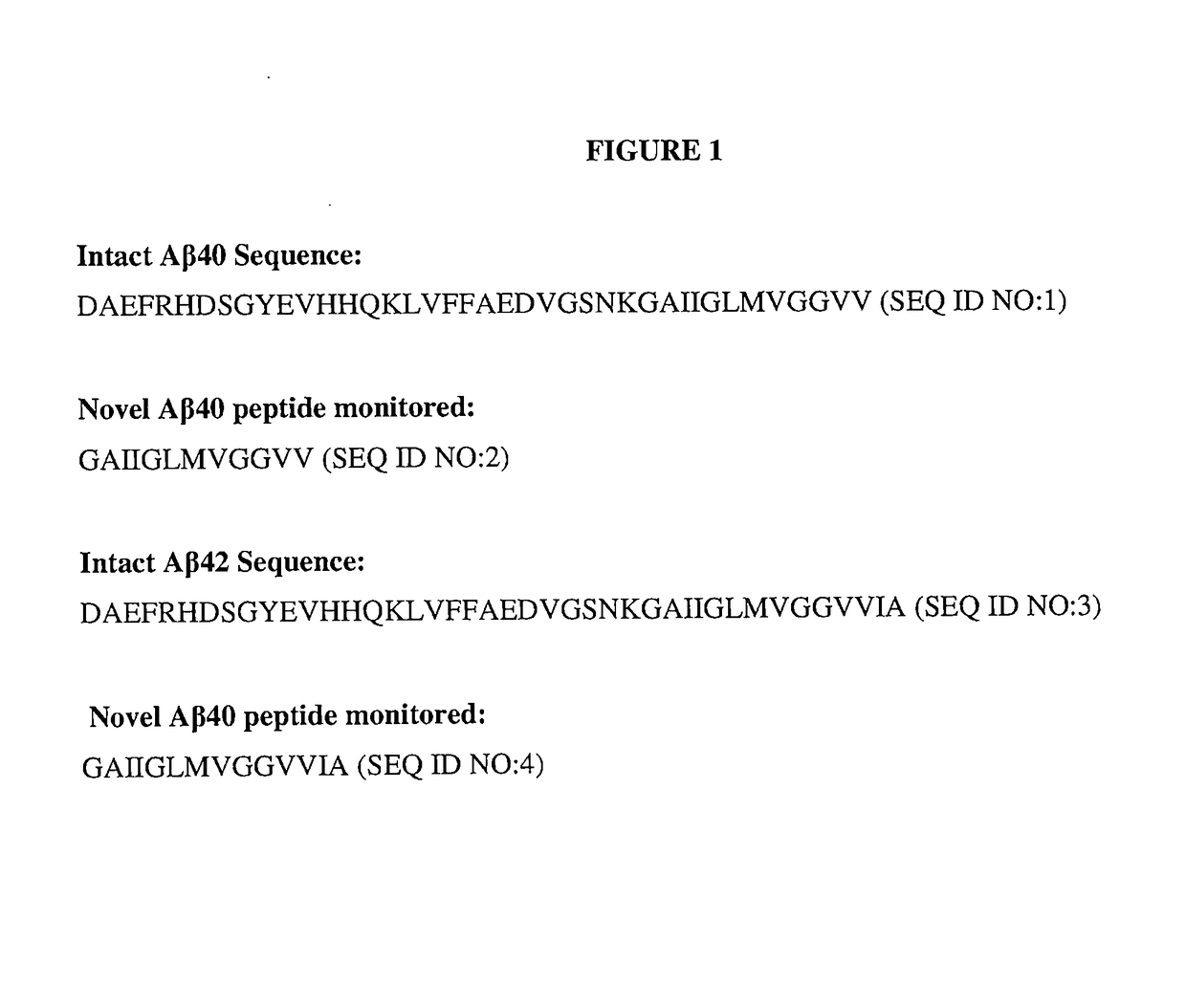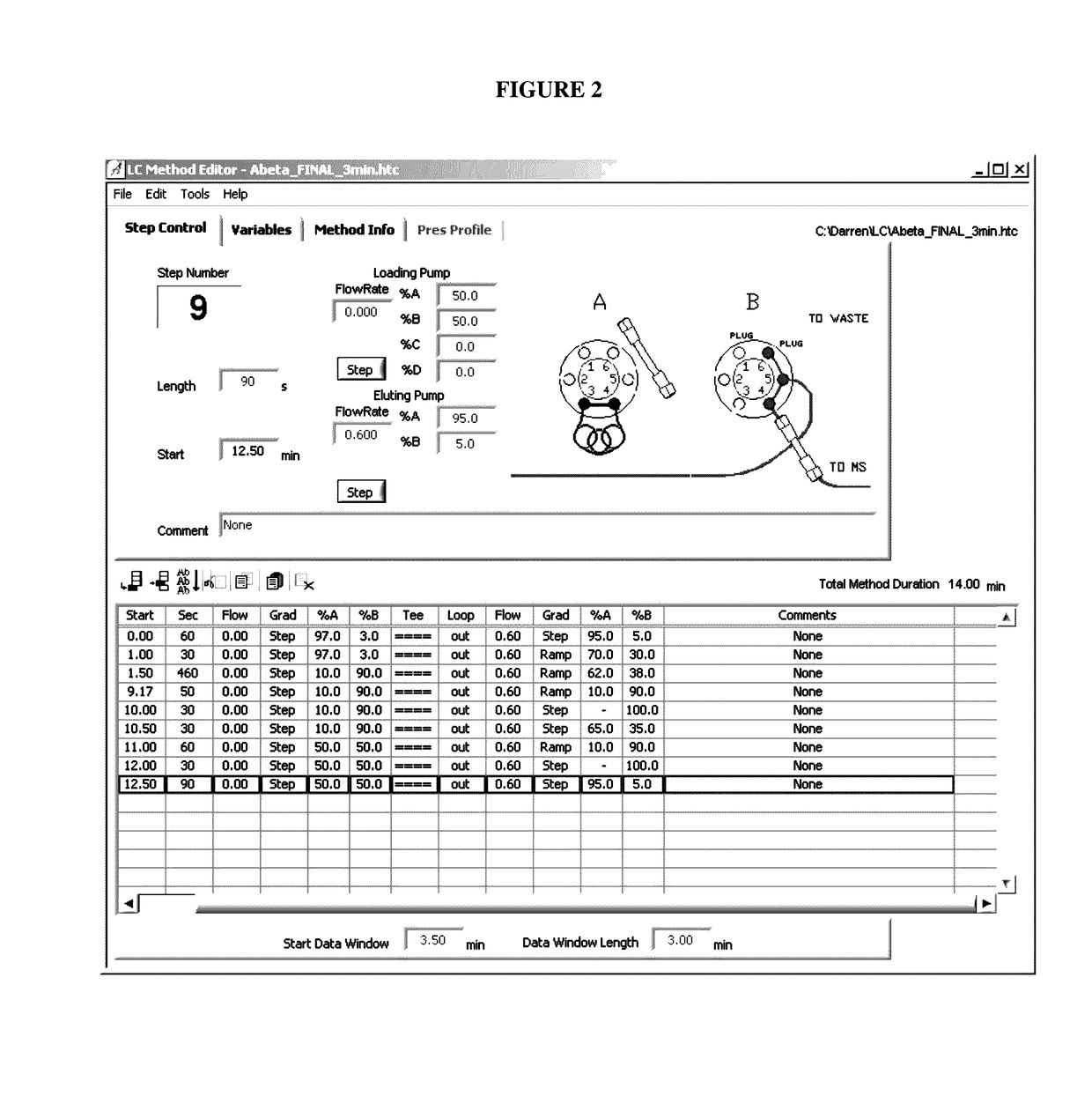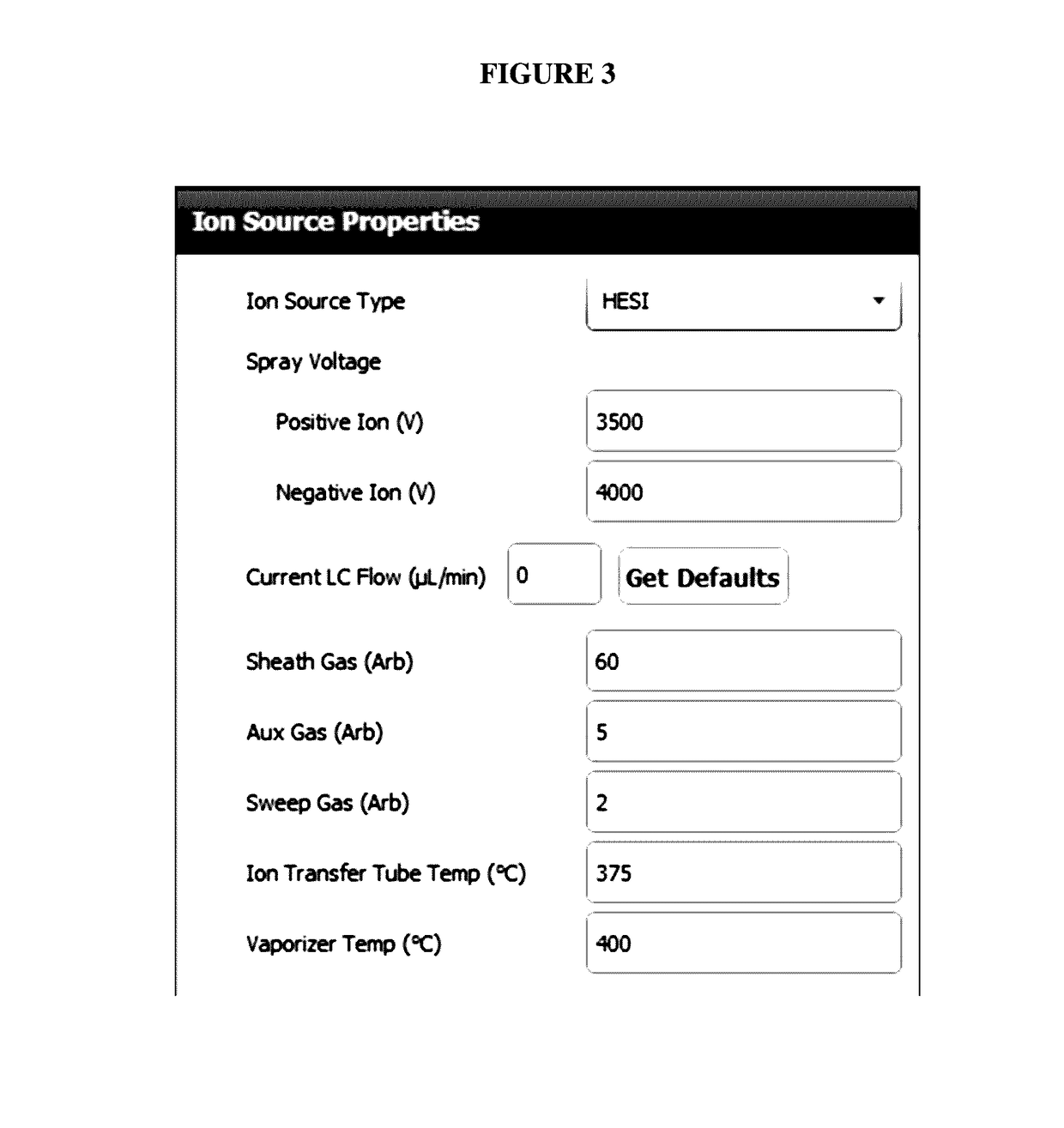Amyloid beta detection by mass spectrometry
a mass spectrometry and amyloid beta technology, applied in the field of amyloid beta detection or quantitation, can solve the problems of concern observed with currently available immunoassays, and achieve the effect of improving the removal of solven
- Summary
- Abstract
- Description
- Claims
- Application Information
AI Technical Summary
Benefits of technology
Problems solved by technology
Method used
Image
Examples
example 1
Pretreatment and Amyloid Beta Stabilization
96 Well Polypropylene Plate and Microcentrifuge Test Tube Pretreatment
[0132]E. coli was lysed and precipitated using methanol in a 96 well plate.
[0133]Methanol was then discarded while the pellet is resuspended in ammonium bicarbonate pH 8.
[0134]Sigma bovine trypsin was added, and the samples were incubated at 60° C. for 2 days.
[0135]All digest was then discarded to waste or pooled to pretreat pipette tips.
[0136]Empty plates and test tubes were completely dried.
Pipette Tip Pre-Treatment
[0137]Pipette tips were used to pipette up and down E. coli digest at least 3 times and then incubated at 60° C. for 2 days or until completely dried.
Amyloid Beta Peptide Stabilization
[0138]AB40, AB42, and internal standards were synthesized in pretreated test tubes and were resuspended in 6M urea with 4 mg BSA.
[0139]The standards were then individually diluted 1:10 in 0.1M PBS with N-terminal and C-terminal antibodies and apolipoprotein E2 and E4.
[0140]Each ...
example 2
eparation
[0143]0.5 mL of sample or standard was pipetted using pre-treated pipette tips into a pre-treated 96 well plates.
[0144]5 ng of internal standard was added.
[0145]250 uL of 18M urea was added.
[0146]2 ug of Lys-C was added to each sample for digestion of amyloid beta.
[0147]Plate was sealed with an adhesive lid before being digested in a enzymatic microwave at 450w, 45° C. for 4 hours.
[0148]Samples were then extracted using Waters mixed mode strong anion exchange.
[0149]Sample eluates were then dried down completely using heated nitrogen.
[0150]Samples were then resuspended in a reconstitution buffer for LC-MS / MS analysis.
example 3
and Quantitation of Amyloid Beta Fragments by MS / MS
[0151]Ions passed to the first quadrupole (Q1), which selected ions with a mass to charge ratio of either 1085.6±0.5 m / z or 1269.7±0.5 m / z for the Aβ40 fragment and the Aβ42 fragment, respectively. Ions entering Quadrupole 2 (Q2) collided with argon gas to generate ion fragments, which were passed to quadrupole 3 (Q3) for further selection.
Simultaneously, the same process using isotope dilution mass spectrometry was carried out with an internal standard. The following mass transitions were used for detection and quantitation during validation on positive polarity.
TABLE 1Mass Transitions for Amyloid Beta fragments (Positive Polarity)StartEndCollisionTimeTimePrecursorProductEnergyCompound(min)(min)Polarity(m / z)(m / z)(V)GAIIGLMVGGVV010Positive1085.60812.3731GAIIGLMVGGVV010Positive1085.60869.4033GAIIGLMVGGVV010Positive1085.60968.4323GAIIGLMVGGVVIA010Positive1269.70869.3943GAIIGLMVGGVVIA010Positive1269.70968.4434GAIIGLMVGGVVIA010Positive1...
PUM
| Property | Measurement | Unit |
|---|---|---|
| particle diameter | aaaaa | aaaaa |
| diameter | aaaaa | aaaaa |
| diameter | aaaaa | aaaaa |
Abstract
Description
Claims
Application Information
 Login to View More
Login to View More - R&D
- Intellectual Property
- Life Sciences
- Materials
- Tech Scout
- Unparalleled Data Quality
- Higher Quality Content
- 60% Fewer Hallucinations
Browse by: Latest US Patents, China's latest patents, Technical Efficacy Thesaurus, Application Domain, Technology Topic, Popular Technical Reports.
© 2025 PatSnap. All rights reserved.Legal|Privacy policy|Modern Slavery Act Transparency Statement|Sitemap|About US| Contact US: help@patsnap.com



